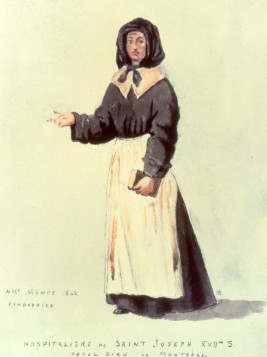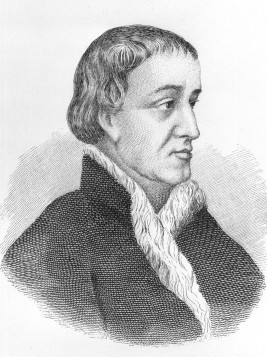People
Jeanne Mance, co-founder of Montréal
The importance of Jeanne Mance’s contribution to the founding of Montréal was long underestimated. Despite her contemporaries recognizing her essential role in the founding of Montréal, it was not until May 17, 2012, after the city undertook steps to determine the extent of her contribution, that Jeanne Mance is proclaimed founder of Montréal along with Sieur de Maisonneuve.
Jeanne Mance succeeded in getting the financial and moral support of influential French representatives and led a group of missionaries, of which she was part, to found Montréal.
After arriving in 1642, she ensures stewardship of the colony, manages provisioning and runs the hospital she has founded as well as taking initiatives that will save the colony on several occasions.
A ringside seat at the founding of Montréal
Born in Langres, France, in 1606, Jeanne Mance begins early in her life to look for spiritual fulfilment. She pursues an answer when she responds to a call to become a missionary in the New World and becomes a member of the Société de Notre-Dame de Montréal, created in 1640 in Paris by Jérôme Le Royer de La Dauversière in order to found a colony on the Island of Montréal. Jeanne Mance creates close ties with people of influence who provide moral and financial support for the project. She gets the support of a rich benefactor, Angélique de Bullion, who wishes to remain anonymous and finances the founding of a hospital in New France.
An un-married nurse, Jeanne Mance embarks on a journey to New France in 1641 and spends her first winter in Sillery, outside Québec City, before travelling to Ville-Marie. On Saturday, May 17, 1642, she finds herself side-by-side with de Maisonneuve when he arrives on the island and officially takes possession of the area in the name of the Société de Notre-Dame de Montréal. She is also present the next day at the mass said by Jesuit priest Barthélemy Vimont that has always been closely associated with the founding of Montréal.
Jeanne Mance and Maisonneuve divide the work in the colony: Maisonneuve is responsible for the “outdoors and war” and Jeanne Mance takes on responsibility for “care indoors.” Most notably, she founds Hôtel-Dieu hospital in 1645, over which she presides and is treasurer and director. The institution is the size of a small house: the 60X24-foot footprint includes six beds for men and two for women. In 1654, the small building is replaced by a new, larger one.
Decisive action to save the colony
The first years of the Montréal colony were difficult for Jeanne Mance and the small contingent of French colonists. Living conditions were far from stellar, the climate was hostile, construction of homes was progressing slowly and co-existence with the Amerindians was not always easy. By 1650, of some 150 people who had come to Montréal since it had been founded, only about 50 remained. Given the circumstances, Jeanne Mance therefore convinced Maisonneuve to travel to France and recruit new colonists with the money Madame de Buillion had donated for the functioning of the hospital.
This event, known as the Great Recruitment, is believed to have saved the colony. In 1653, 177 colonists, including 14 women, disembark in Montréal. The men who have been recruited sign contracts with the Compagnie de Montréal and engage to work on this side of the Atlantic for a period of three to five years in exchange for room and board, and a paid voyage back to France. Marguerite Bourgeoys is on the same crossing and becomes Maisonnneuve’s and Jeanne Mance’s partner in the administration of the colony. Montreal’s future is thus secured.
For her part, Jeanne Mance returns to France in 1658, after a fall on the ice that causes her to lose the use of her right arm. She returns to Montréal the next year, her arm miraculously healed, and brings with her the Religious Hospitallers of Saint Joseph who take charge of caring for the sick at Hôtel-Dieu, the hospital that Jeanne Mance oversees for the rest of her life.
Before she dies, in 1672 Jeanne Mance lays one of the first stones of what will become Montréal’s Notre Dame cathedral. Her tomb is conserved today in the chapel of the Musée des Hospitalières de l'Hôtel-Dieu on Pine Avenue in Montréal.


